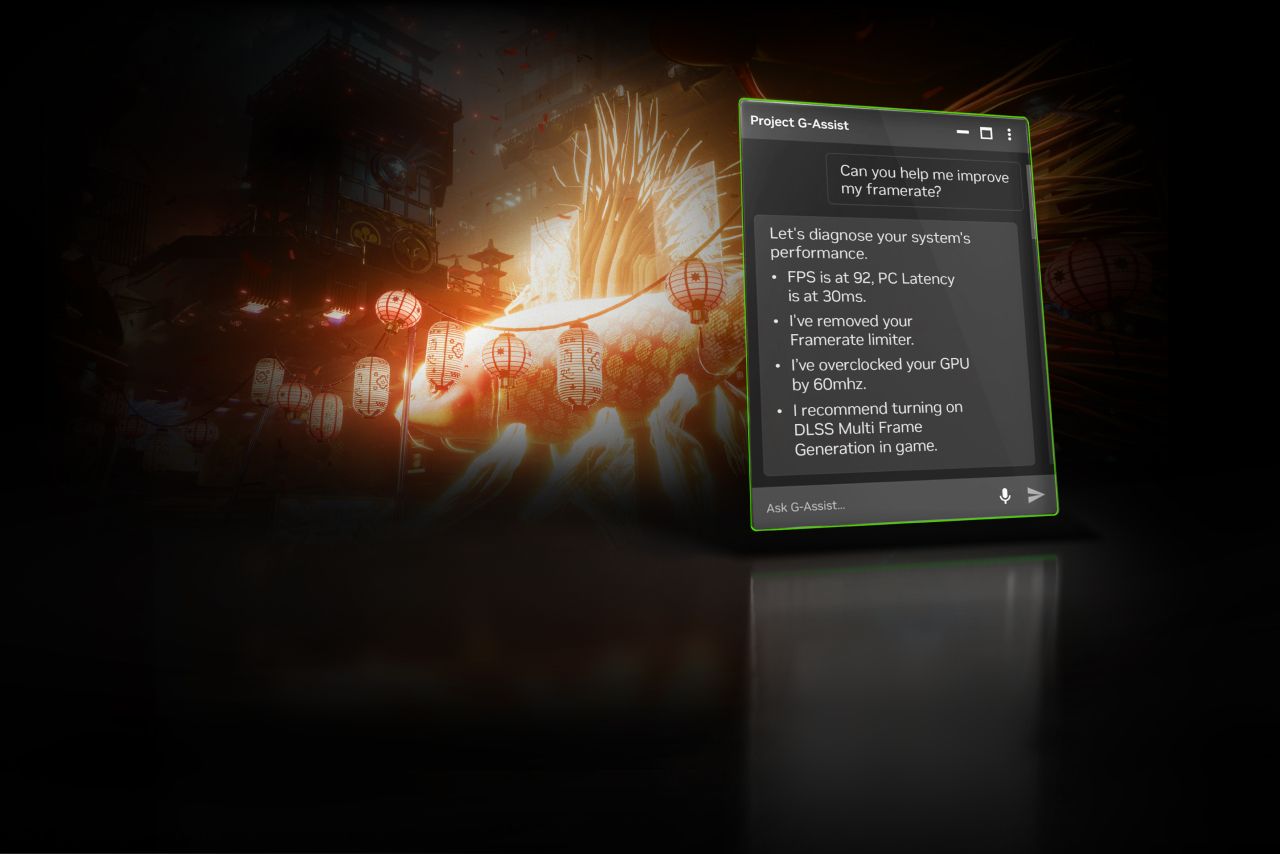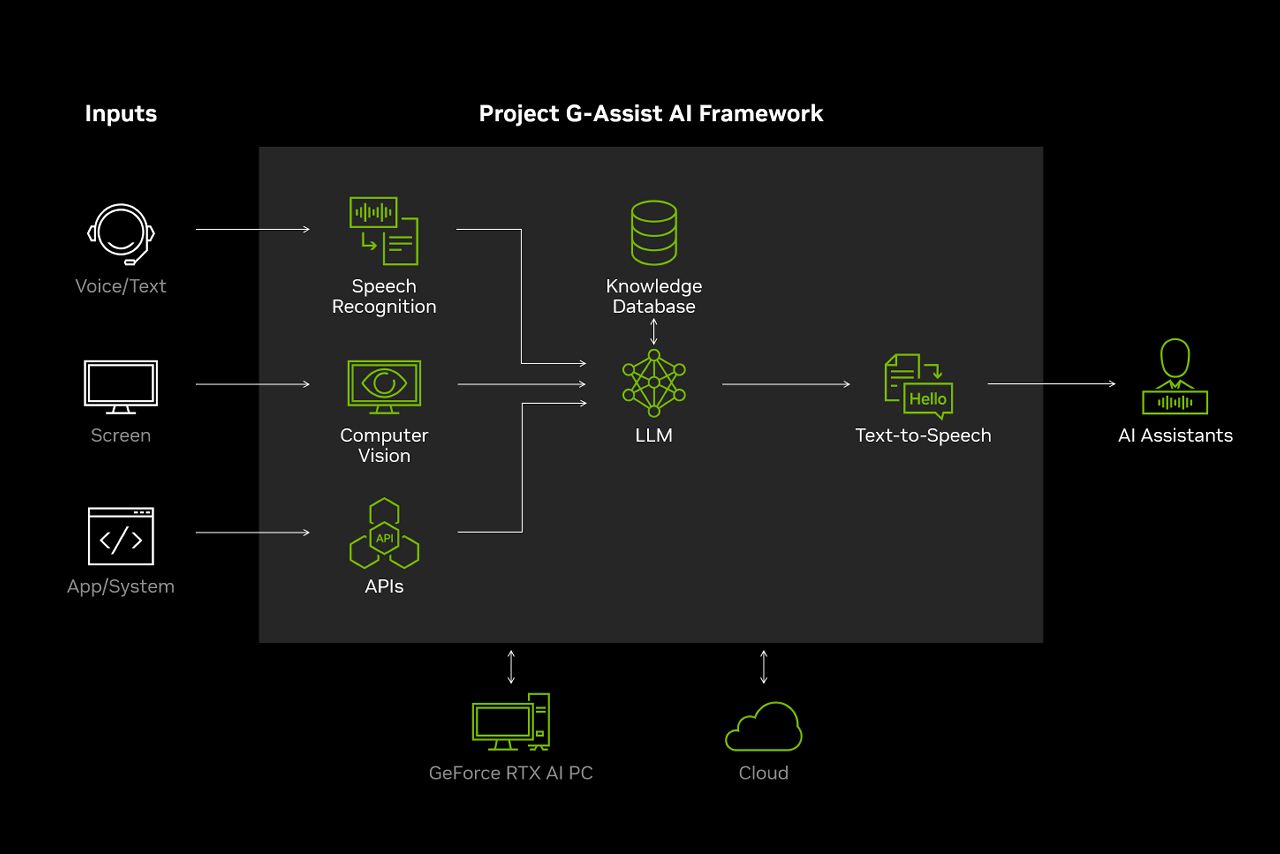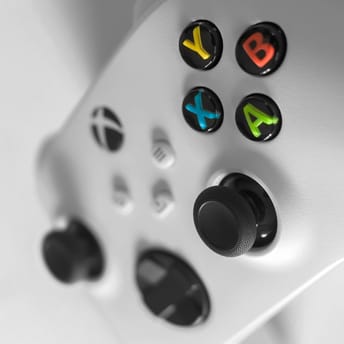Nvidia Launches an AI-powered Assistant for GeForce RTX PCs

|
|
Key points
- Nvidia officially launches Project G-Assist, an AI-powered assistant for PC gamers.
- It utilizes a lightweight, Llama-based instruction model with 8 billion parameters.
- Detailed instructions on creating, sharing, and using plugins for G-Assist are available on Nvidia’s GitHub repository.
Nvidia dropped Project G-Assist, an AI-powered assistant that is essentially an SLM (Small Language Model) integrated within the Nvidia App.
G-Assist, which was initially teased at Computex 2024, is now available for GeForce RTX desktops via the NVIDIA App. It utilizes a lightweight, Llama-based instruction model with 8 billion parameters. Designed to run locally, it requires no cloud hosting or paid subscriptions. Following voice or text commands G-Assist can adjust in-game settings, overclock the user’s graphics card, diagnose performance issues and tune PC’s power efficiency.
Nvidia’s AI assistant can chart and export various performance metrics like FPS, latency, GPU utilization, temperatures, etc.
Project G-Assist requires a PC with Windows 10 or Windows 11 installed. It supports GPUs from the GeForce RTX 30, 40, and 50 Series Desktop GPUs, equipped with at least 12GB of VRAM. Compatible CPUs include Intel Pentium G Series, Core i3, i5, i7, or higher, as well as AMD FX, Ryzen 3, 5, 7, 9, Threadripper, or higher models. The installation demands 6.5 GB of disk space for the System Assistant and an additional 3 GB for Voice Commands. Additionally, the system requires the GeForce 572.83 driver or a newer version and currently supports only English language. While G-Assist currently runs only on desktop GPUs, Nvidia promises laptop compatibility soon.
Developers and enthusiasts can extend the capabilities of G-Assist through community-developed plugins. Nvidia has provided a GitHub repository containing samples and instructions for creating plugins. So now developers can define new functions in JSON format and place the configuration files into a specific directory, and G-Assist automatically loads and uses them. Plugin submissions can be sent to Nvidia for review and potential integration into the main system.

Detailed instructions on creating, sharing, and using plugins are available on Nvidia’s GitHub repository. Additionally, Nvidia plans to enable the integration of G-Assist into low-code/no-code frameworks and AI workflows through tools like CrewAI, Flowise, and LangFlow, enhancing community-driven customization and function-calling capabilities.
The launch of G-Assist comes on the heels of Microsoft’s unveiled AI-powered assistant called Copilot for Gaming, set to launch in April 2025 within the Xbox Insiders program.

















